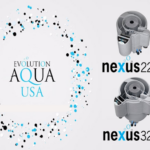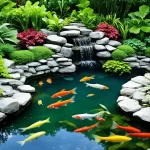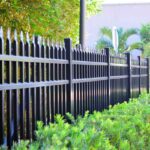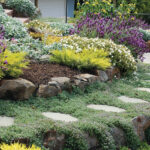Gardening can be a rewarding and relaxing activity, but it can also be time-consuming and difficult to maintain. One of the biggest challenges for gardeners is keeping plants properly watered, especially in indoor environments where access to sunlight and water can be limited. Self-watering planters are an innovative solution to this problem, offering a low-maintenance way to keep plants healthy and hydrated. In this article, we’ll explore the benefits of self watering planters and how they can make gardening easier and more enjoyable.
Benefits of Self-Watering Planters
Self-watering planters offer several advantages over traditional planters. Here are some of the key benefits:
Saves time and effort: With self-watering planters, you don’t have to worry about watering your plants every day. The reservoir system in these planters ensures that your plants get the water they need, without you having to constantly monitor and adjust their watering schedule. This is especially useful if you have a busy schedule or travel frequently.
Reduces the risk of over or under-watering: Overwatering or underwatering plants can be detrimental to their health. Self-watering planters eliminate this risk by providing a consistent level of moisture to the plants. The plants absorb the water they need, and excess water drains out of the planter. This helps to prevent root rot and other problems caused by overwatering.
Provides consistent hydration to plants: Plants need a consistent level of moisture to thrive, and self-watering planters provide just that. The reservoir system ensures that plants have access to water whenever they need it, which can result in healthier and more vigorous growth.
Improves plant growth and health: When plants have access to consistent hydration, they are better able to grow and thrive. Self-watering planters can improve the overall health and appearance of your plants, making them more vibrant and beautiful.
Suitable for a variety of plants and environments: Self-watering planters are versatile and can be used to grow a wide range of plants, including low-maintenance indoor plants. They are also suitable for a variety of environments, from small apartments to large outdoor gardens.
How Self-Watering Planters Work
Self-watering planters work by using a reservoir system that provides water to the plant as needed. There are several different types of self-watering planters, but they all operate on the same basic principle.
The reservoir system consists of a container that holds water, which is connected to the planting area by a wick or other mechanism. As the soil in the planting area dries out, it draws water from the reservoir through the wick, keeping the soil moist and the plant hydrated.
Some self-watering planters also have a drainage system that allows excess water to drain out of the planter. This prevents water from pooling in the bottom of the planter, which can lead to root rot and other problems.
Choosing the Right Self-Watering Planter
There are several factors to consider when choosing a self-watering planter, including size, material, and design. Here are some tips to help you choose the right planter for your needs:
Size: Choose a planter that is appropriately sized for the plant you want to grow. Larger plants will require larger planters with bigger reservoirs, while smaller plants can thrive in smaller planters.
Material: Self-watering planters come in a variety of materials, including plastic, ceramic, and metal. Consider the look and feel you want to achieve, as well as the durability of the material.
Design: Self-watering planters come in a variety of designs, from traditional to modern. Consider the overall aesthetic of your home or garden, and choose a planter that complements your decor.
Cost: Self-watering planters can vary in cost, so consider your budget when selecting a planter. While they may be more expensive than traditional planters, the time and effort you save on watering may be worth the investment.
Best Plants for Self-Watering Planters
Self-watering planters are suitable for a wide variety of plants, including low-maintenance indoor plants. Here are some of the best plants to grow in self-watering planters:
Snake Plant: Snake plants are low maintenance and can thrive in a variety of environments. They require very little watering and can even tolerate low-light conditions.
Spider Plant: Spider plants are known for their ability to purify the air, making them a great choice for indoor spaces. They are also low maintenance and can thrive in self-watering planters.
Peace Lily: Peace lilies are another plant that can improve indoor air quality. They prefer moist soil, making them a great choice for self-watering planters.
Herbs: Herbs like basil, thyme, and parsley can be grown in self-watering planters and provide a fresh source of herbs for cooking.
Tomatoes: Self-watering planters are also great for growing tomatoes, which require consistent moisture to thrive.
Tips for Maintaining Self-Watering Planters
While self-watering planters are low maintenance, they still require some care to ensure they continue to function properly. Here are some tips for maintaining self-watering planters:
Check the water level: It’s important to periodically check the water level in the reservoir to make sure it’s not running low. Refill the reservoir as needed to ensure your plants continue to receive adequate moisture.
Clean the planter: Over time, self-watering planters can become dirty and clogged. It’s important to clean them periodically to ensure they continue to function properly. Remove any debris or dirt from the planter and clean it with soap and water.
Avoid over-fertilizing: Self-watering planters can accumulate excess fertilizer, which can be harmful to plants. Avoid over-fertilizing and use a balanced fertilizer as directed.
Avoid direct sunlight: Self-watering planters can be sensitive to direct sunlight, which can cause the water to evaporate quickly. Place your planter in a location that receives indirect sunlight to ensure consistent moisture.
Conclusion
Self-watering planters are a game-changer for anyone who wants to enjoy the benefits of gardening without the hassle of constant watering. They offer a low-maintenance way to keep your plants healthy and hydrated, while also providing consistent growth and improved plant health. By choosing the right self-watering planter and selecting the right plants, you can create a beautiful and thriving garden in your home or outdoor space. So if you’re looking for an effortless way to enjoy gardening, consider investing in a self-watering planter and some low-maintenance indoor plants. Your plants (and your busy schedule) will thank you!









